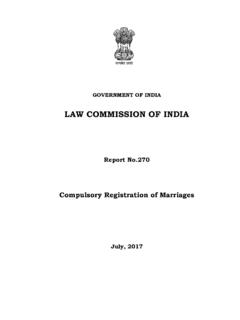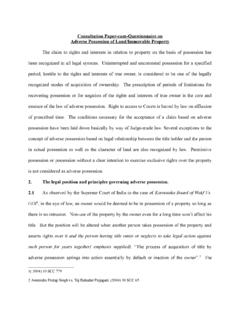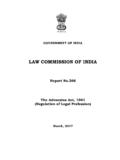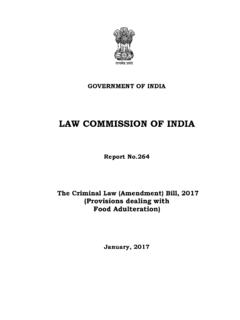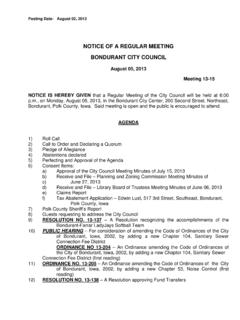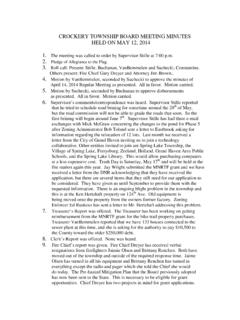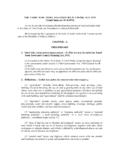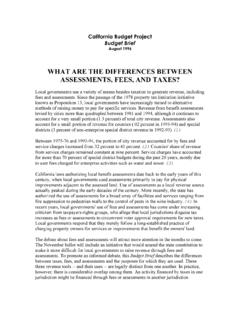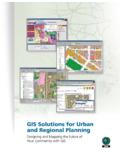Transcription of Laws on Registration of Marriage and Divorce – A …
1 GOVERNMENT OF INDIALAWCOMMISSIONOFINDIALaws on Registration of Marriage and Divorce A Proposal for Consolidation and ReformReport No. 211 OCTOBER 2008 LAW COM M I SSION OF INDIA (REPORT NO. 211)Laws on Registration of Marriage and Divorce A Proposal for Consolidation and ReformForwarded to Dr. H. R. Bhardwaj, Union Minister for Law and Justice, Ministry of Law and Justice, Government of India by Dr. Justice AR. Lakshmanan, Chairman, Law Commission of India, on 17th day of October, 18th Law Commission was constituted for a period of three years from 1st September, 2006 by Order No. (LA) dated the 16th October, 2006, issued by the Government of India, Ministry of Law and Justice, Department of Legal Affairs, New Law Commission consists of the Chairman, the Member-Secretary, one full-time Member and seven part-time ble Dr.
2 Justice AR. LakshmananMember-SecretaryDr. Brahm A. AgrawalFull-time MemberProf. Dr. Tahir MahmoodPart-time MembersDr. (Mrs.) Devinder Kumari RahejaDr. K. N. Chandrasekharan PillaiProf. (Mrs.) Lakshmi JambholkarSmt. Kirti SinghShri Justice I. VenkatanarayanaShri SharmaDr. (Mrs.) Shyamlha Pappu3 The Law Commission is located in ILI building ,2nd Floor, Bhagwan Das Road,New Delhi-110 001 Law Commission StaffMember-SecretaryDr. Brahm A. AgrawalResearch StaffShri Sushil Kumar : Joint Secretary & Law OfficerMs. Pawan Sharma: Additional Law OfficerShri J. T. Sulaxan Rao: Additional Law OfficerShri A. K. Upadhyay: Deputy Law OfficerDr. V. K. Singh: Assistant Legal AdviserAdministrative StaffShri Sushil Kumar : Joint Secretary & Law OfficerShri D. Choudhury: Under SecretaryShri S. K. Basu: Section OfficerSmt. Rajni Sharma: Assistant Library & Information Officer4 The text of this Report is available on the Internet Government of IndiaLaw Commission of IndiaThe text in this document (excluding the Government Logo) may be reproduced free of charge in any format or medium provided that it is reproduced accurately and not used in a misleading context.
3 The material must be acknowledged as the Government of India copyright and the title of the document enquiries relating to this Report should be addressed to the Member-Secretary and sent either by post to the Law Commission of India, 2nd Floor, ILI building , Bhagwan Das Road, New Delhi-110001, India or by email to 5DO No. 6(3)133/2007-LC(LS) 17 October, 2008 Dear Dr. Bhardwaj Ji, Sub: Laws on Registration of Marriage and Divorce A Proposal for Consolidation and Reform I am forwarding herewith the 211th Report of the Law Commission of India on the above subject has been taken up suo motu in the light of the directions of the Supreme Court dated in Seema v. Ashwani Kumar [2006 (2) SCC 578] that all marriages shall be compulsorily registered and that the State Governments shall initiate action for rule-making in this regard.
4 There is a great diversity in respect of laws for Registration of we have a 122 year old Central Act, viz., the Births, Deaths and Marriages Registration Act, 1886 which states that Births and Deaths are to be registered under the Act by the Registrars of Births and Deaths appointed by the State but there is no provision for Registration of marriages and hence the title of the Act is somewhat misleading. Under the Act, Registrar-General of Births, Deaths and Marriages is only to keep proper Indexes of the certified copies of Marriage Registers received by him under the provisions of the Special Marriage Act, 1954, Indian Christian Marriage Act, 1872 and Parsi Marriage and Divorce Act, we have few other State laws on Marriage Registration in Bombay, Andhra Pradesh, West Bengal but nowhere failure to register a Marriage which is otherwise compulsory, affects the validity of Marriage in any way.
5 The administrative machinery for Registration of marriages is not regulated everywhere by one and the same law. In different parts of the country it is regulated either by one of the three central laws the Births, Deaths and Marriages Registration Act, 1886, the Registration Act, 1908 and Registration of Births and Deaths Act, 1969 or by a local law, or a combination of both. This creates a lot of confusion with Registration officials as well as people wanting or required to register their marriages. There was a tremendous diversity of laws relating to Registration of marriages making it complicated and for Registration of divorces, the laws which provide for any kind of Registration of Divorce is that of Muslims and Parsis but provisions of the State laws are dormant and hardly in practice and thus leave abundant room for misuse of law and cause great hardship to view of the above, the Law Commission recommends enactment of a Marriage and Divorce Registration Act to be made applicable in the whole of India and to all citizens irrespective of their religion and personal law and without any exceptions or proposed law should deal only with Registration of marriages and divorces and not with any substantive aspect now governed by various matrimonial laws general and community - specific.
6 Accordingly, the Births, Deaths and Marriages Registration Act, 1886 be repealed and Births and Deaths Registration Act, 1969 be re-named as Births, Deaths and Marriages Registration Act with a provision that officials working and records maintained under the former Act shall be deemed to be working and maintained under the latter recommendations, if accepted and implemented, will hopefully address the concern of the Supreme Court lying behind the Court s repeated directive to the State Governments to ensure compulsory Registration of all marriages in the acknowledge the extensive contribution made by Prof. Dr. Tahir Mahmood, Full-time Member, in preparing this kind regards,Yours sincerely,(Dr. Justice AR. Lakshmanan)Dr. H. R. Bhardwaj,Union Minister for Law and Justice,Government of India,Shastri Bhavan,New Delhi-110 Page I Introduction10 Chapter II Registration of Civil Marriages Special Marriage Act Special Marriage Act Marriage Act 196913 Chapter IIIR egistration of Hindu, Buddhist, Jain and Sikh Marriage Act Marriage Registration and Local Laws 16 Chapter IV Registration of Muslim by the Kazis Act 1880 Muslim Marriage and Divorce Registration Acts 19 Chapter V Registration of Christian, Parsi, Jewish and Bahai Christian Marriage Act Marriage and Divorce Act and Jewish Marriages248 Chapter VI Births, Deaths and Marriages Registration Act 1886 Scope of the Act of Marriage Records 25 Chapter VII General State Laws on Marriage Registration A.
7 Bombay Registration of Marriages Act 195427 B. Laws of Other States 29 Chapter VIII Registration of Obtained Outside the Obtained in Courts31 Chapter IXFindings and RecommendationsA. Findings32B. Recommendations349 CHAPTER I IntroductionSince February 2006 the Supreme Court has in Seema v. Ashwani Kumar directed the State governments thrice to frame Rules for compulsory Registration of all marriages irrespective of the religion and personal law of the parties. The States are now in the process of implementing these directives in various ways. Technically, rules having the effect of law can be framed by any government only under an authority delegated to it by proper legislation. We have, therefore, to examine for this purpose provisions relating to Marriage Registration under various central and local laws in force in the country. As is well known, our country has a dual system of matrimonial laws.
8 Various communities or groups of communities are ordinarily governed by their personal laws, codified or uncodified, while at the same time individuals can opt out of the community-specific family-law regime and voluntarily subject themselves to the national laws on civil marriages. Provisions for Registration of marriages, optional or mandatory, are found under most of these laws. Provisions are found in some but not all matrimonial laws for Registration of divorces with State-appointed officials. There is more legal diversity in this respect than in regard to Registration of is high time we took a second look at the entire gamut of Central and State laws on Registration of marriages and divorces to assess if a uniform regime of Marriage and Divorce Registration laws is feasible in the country at this stage of social development and, if not, what necessary legal reforms may be introduced for streamlining and improving upon the present system.
9 10 CHAPTER IIRegistration of Civil Marriages A. Old Special Marriage Act 1872 The first law of civil marriages of India was the Special Marriage Act 1872. It was enacted on the recommendation of the First Law Commission set up during the British rule. Mainly meant to facilitate inter-religious marriages, initially it could be availed only by those who did not claim to profess any of the established religions. Later, by an amendment effected in 1923 it was made available as an alternative to personal law also to marriages both parties to which belonged to the Hindu, Buddhist, Jain or Sikh religious this Act the processes of solemnization and Registration of Marriage were combined into the same transaction. Marriage Registrars, independent or ex officio, were to be appointed under its provisions by the Local Government for various territories under its administration (Section 3); and they would play the key role in the solemnization of marriages under the Act.
10 The process would begin with a notice of the intended Marriage to be given to the Marriage Registrar in the prescribed form, and end with its solemnization in his presence (Sections 4, 12). After solemnization of a Marriage , the Marriage Registrar would enter a certificate thereof in the prescribed form in his Marriage Certificate Book, signed by the parties and three witnesses (Section 13). Every Marriage Registrar acting under the Act was required to send, at prescribed intervals, certified true copies of all entries in his Marriage Certificate Book to the Registrar-General of Births, Deaths and Marriages of the region (Section 13-A). The Marriage Certificate Book would at all reasonable times be open for inspection and shall be admissible as evidence of the truth of the 11statements therein contained and its copies would be provided to the applicants (Section 14).


